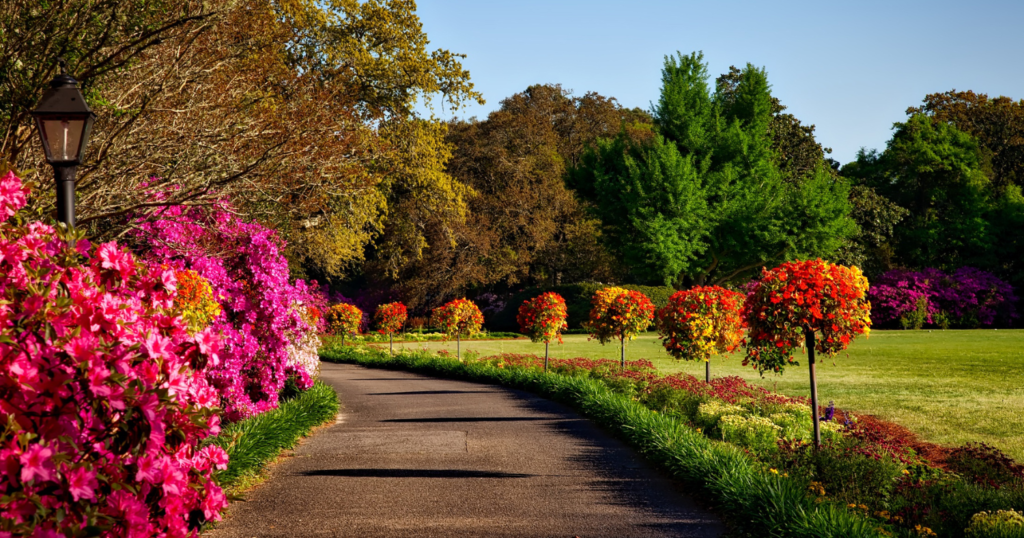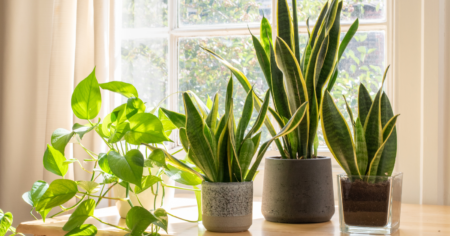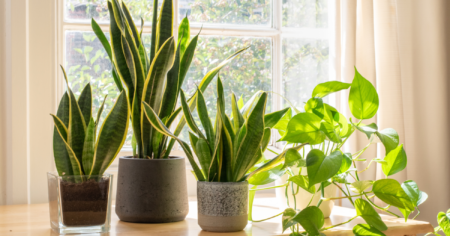As the days grow shorter and the temperatures dip, many might assume the gardening season is ending. However, fall presents a unique opportunity to extend the growing season and enhance the beauty of your garden with a selection of plants that thrive in cooler weather. Fall gardening is not just about prolonging the joy of gardening. It’s a strategic move to maximize your garden’s potential. Choosing the best fall garden plants allows you to enjoy a vibrant and productive garden even as summer fades away.
This blog post will delve into fall gardening, highlighting its significance in extending the growing season and boosting your garden’s aesthetic appeal. We’ll explore a curated list of plants perfect for your fall garden, including vegetables like broccoli, lettuce, and kale. Which can withstand cooler temperatures and even improve flavor after a frost. We’ll also discuss the importance of timing your planting to ensure a successful fall harvest, considering factors such as the first frost date and the growth rate of different vegetables.
Whether you’re looking to add color to your garden with late-blooming flowers or to harvest a bountiful crop of vegetables, this post will provide you with the knowledge and inspiration you need to make the most of the fall gardening season. So, grab your gardening tools and prepare to plant a fall garden that will bring joy and abundance to your table and landscape.
What makes fall garden plants unique compared to those in other seasons?

Fall garden plants are distinct for their resilience and adaptability to the cooler, diminishing light conditions of early fall. Unlike summer crops that succumb to frost, many fall vegetables, such as Brussels sprouts, kale, and root vegetables.
They withstand cooler temperatures and often develop richer flavors after exposure to frost. The optimal time to plant these robust varieties is as the intense heat of summer begins to subside, allowing seedlings to germinate and grow strong before the onset of the first frost.
Planting a fall garden leverages the unique conditions of the season, with the best vegetables to plant being those that can endure and even benefit from the cooler climate, ensuring a plentiful harvest throughout fall and winter. From the sweet, nutty taste of squash to the crisp texture of root vegetables, the fall vegetable garden showcases the gardener’s ability to sow, nurture, and reap across the changing seasons
How can you select and care for fall garden plants to ensure seasonal splendor?

Selecting and caring for fall garden plants to ensure their beauty and bounty through the season hinges on understanding the unique challenges and opportunities of late summer and early fall. As days shorten and temperatures cool, selecting plants that thrive in these conditions is crucial for a good harvest. Cool-season vegetables and herbs, such as parsnip, bok choy, and green onions, become ideal choices.
To ensure a successful fall garden, it’s crucial to select plants that can withstand the unique conditions of the season. Here are some key points to consider when planning and caring for your fall garden:
Selecting Fall Garden Plants
Choose plants that are known for their resilience to cooler temperatures and shorter days. Some of the best fall garden plants include:
- Brussels sprouts: These thrive in cooler temperatures and can improve in flavor after a frost.
- Kale: Hardy and can withstand cold, even improving in taste post-frost.
- Broccoli: A cool-season crop that can be harvested in the fall.
- Lettuce: Prefers the mild temperatures of early fall.
- Cabbage: Grows well in the fall and can tolerate light frosts.
- Beet: Root vegetables that can be planted in late summer for a fall harvest.
- Radish: Quick-growing and perfect for a fall vegetable garden.
- Cauliflower: Another cool-season crop that can be harvested in the fall.
- Peas: Can be planted in mid to late summer for a fall crop.
Caring for Fall Garden Plants
- Timing: Plant seeds in late summer or early fall, depending on the first frost date and the growth rate of the vegetables.
- Soil Preparation: Amend the soil with compost to provide nutrients for the fall crop.
- Watering: Keep the soil consistently moist, especially during dry spells in early fall.
- Protection: Use row covers or cold frames to protect plants from early frosts.
- Succession Planting: Plant crops at intervals to extend the harvest period.
- Mulching: Apply mulch to regulate soil temperature and retain moisture.
Incorporating these plants and care techniques can extend your growing season and enjoy a bountiful fall harvest. Remember to monitor the weather and provide extra plant protection as the temperatures drop.
How to Select the Right Fall Garden Plants?
Selecting the right plants for your fall garden hinges on understanding their hardiness, bloom time, and color to ensure a garden thrives from late summer to early fall. The criteria for choosing the best plants include their ability to withstand cool temperatures, aesthetic appeal during the season, and resilience against varying soil temperatures.
When planning a fall garden, choosing plants that will thrive in the cooler temperatures and shorter days of the season is essential. Here are some criteria and top picks for fall garden plants:
1. Criteria for Selecting Fall Garden Plants
- Hardiness: Choose plants that can withstand the cooler temperatures and potential fall frosts. Look for plants with good cold tolerance or those labeled hardy in your specific USDA zone.
- Bloom Time: Opt for plants that bloom in late summer to early fall or have a long blooming period that extends into fall.
- Color: Fall is synonymous with warm colors. Select plants that offer a range of colors, from the classic yellows, oranges, and reds to purples and pinks, to enhance the autumnal feel of your garden.
2. Top Picks for Fall Garden Plants
- Ornamental Grasses: These add texture and movement to the garden. They come in various sizes and can provide a striking backdrop or accent.
- Hardy Mums (Chrysanthemums): Known for their vibrant blooms, mums are a fall garden staple. They come in stunning shades of red, orange, yellow, white, pink, and lavender and can withstand cooler temperatures.
- Asters: These offer late-season color and are available in various colors, including purple and pink. They attract pollinators and can bloom into late fall.
- Kale and Cabbages: With their foliage interest, these plants provide a different texture and color to the garden. Ornamental varieties offer leaves in green, purple, pink, and white shades.
- Sedum: Known for its drought tolerance and autumn appeal, it comes in various colors and can bloom into the fall, adding flowers and interesting foliage to the garden.
When planning your fall garden, consider your area’s estimated first frost date and choose plants that will mature or peak in beauty before or around this time. For many fall garden vegetables and flowers, it’s best to start planting in mid to late summer to ensure they have enough time to establish before cooler temperatures set in.
Incorporate plants that grow well from direct seeding, such as carrots and mustard greens, which can be planted in late summer for a fall harvest. These cool-season crops can be planted in succession for a continuous harvest, and many are frost-tolerant, improving in flavor after a light frost
Mix in plants with various colors and textures for added interest, and consider using cover crops to enrich the soil and protect your garden site. Remember to monitor soil temperatures and provide good care to your plants late in the season to maximize their growth and beauty. By selecting the right plants and planning accordingly, you can enjoy a beautiful and bountiful fall garden.
Planting and Care Tips for Fall Garden Success
For a thriving fall garden, it’s essential to focus on the right plants and care techniques that cater to the cooler, unpredictable weather of the season. Planting fall vegetables and preparing your garden for the shift in climate can lead to a bountiful harvest and ensure your green space remains vibrant as the year winds down. Here are some key tips to keep your garden flourishing:
- Choose Hardy Vegetables: Opt for cool season vegetables like kale, broccoli, and carrots. These fall vegetables to plant are resilient against colder temperatures and can be planted directly into the garden.
- Soil Preparation: Enrich the soil with compost or manure before your planting date to support healthy growth. This step is crucial for both early fall garden planning and for winter crops that will stay in the ground until the ground freezes.
- Watering Needs: Even as the weather cools, ensure your plants receive enough water, especially if rainfall is scarce. This helps in establishing roots deeply.
- Mulching: Apply a layer of mulch to keep your garden soil moist and warm. This is particularly beneficial for plants planted in the fall, as it helps protect against frost.
- Fertilizing: Use a balanced fertilizer to encourage strong root development without promoting late-season growth that frost could damage.
- Frost Protection: Utilize row covers or extra mulch to shield your plants from early frosts, ensuring they survive into the cooler months.
- Consult the Extension Service: Your local cooperative extension can offer tailored advice on planting dates and hardy vegetables suitable for your area.
- Winter Preparation: As the season progresses, gradually prepare your garden for winter by removing spent plants and adding organic matter to the soil.
By integrating these practices, you can confidently plant fall vegetables and other crops, knowing your garden is well-prepared for the season ahead. Whether you’re planting in your fall garden for the first time or looking to keep your garden productive year-round. These tips will guide you toward fall gardening success.
Design Ideas for Fall Garden Splendor
Autumn’s arrival transforms gardens with a new palette of colors and textures, offering a unique opportunity to refresh your outdoor space. Embracing the season’s splendor requires a blend of creativity and strategic planning.
Whether you’re working with sprawling beds or compact containers, fall’s vibrant foliage and seasonal decor can create a stunning visual display that captures the season’s essence. Here are some design ideas and tips to enhance your garden’s fall splendor:
- Incorporate Fall Foliage: Choose plants with leaves that turn vivid shades of red, orange, and yellow. Maples, burning bush, and sumac can provide dramatic color changes.
- Layer with Perennials: Add depth with fall-blooming perennials like sedum, asters, and ornamental grasses that offer contrasting textures.
- Utilize Evergreens: Incorporate evergreens to provide a backdrop of green that makes the fall colors pop.
- Add Fall Blooms: Integrate chrysanthemums, pansies, and violas that bloom in rich autumnal hues for continuous color.
- Play with Pumpkins: Nestle pumpkins and gourds among your plants for an instant fall touch. Consider a variety of colors and sizes for visual interest.
- Create Height with Cornstalks: Tie cornstalks to fences or posts to add vertical interest and a classic harvest feel.
- Use Containers: For limited space, arrange fall plants in containers. Mix ornamental kale, mums, and ivy for a full look.
- Embrace Edibles: Intersperse edible fall vegetables like kale and Swiss chard for a beautiful and bountiful garden.
- Decorate with Hay Bales: Stack hay bales to create levels for displaying potted plants and pumpkins, adding a rustic charm.
- Incorporate Lighting: As days get shorter, add outdoor lighting to enjoy your fall garden into the evening.
- Harvest Theme: Use harvest baskets, old gardening tools, and burlap as props to enhance the fall harvest theme.
- Cohesive Color Scheme: Stick to a consistent color scheme that reflects fall’s warmth, such as deep reds, oranges, and yellows, to unify the garden’s look.
By integrating these elements, you can create a fall garden that’s a feast for the eyes and a celebration of the season’s textures and tones. Whether planning a complete garden overhaul or simply adding a few seasonal touches, these ideas will help you achieve a cohesive and enchanting autumnal space.
Final Thoughts
As summer’s warmth fades and the days grow shorter, the fall garden emerges as a canvas for the gardener’s creativity. Starting in late August, it’s the perfect time to transition your garden, selecting plants that grow robustly in the cooler weather. Depending on the variety, many plants need to be started six to eight weeks before the average first frost date to ensure they have enough time to mature.
This is when you plant carrots and other root vegetables, counting the days to harvest and anticipating the crisp textures and flavors they’ll bring to your autumn table. Summer is the time to plan and prepare, but fall is when the garden truly comes to life, offering a final, splendid display before the quiet of winter sets in. With the right plants and care, your fall garden can be a vibrant testament to the season’s bounty and beauty, a place of both harvest and serene beauty as the year winds down.








